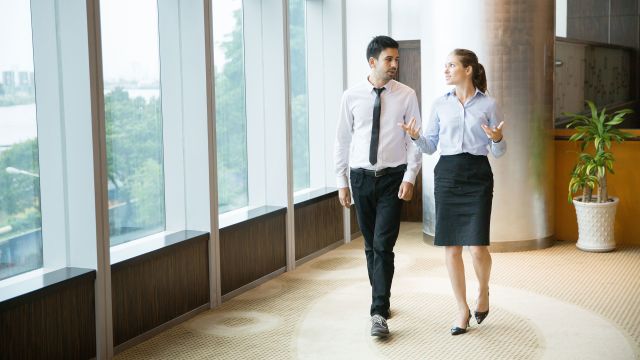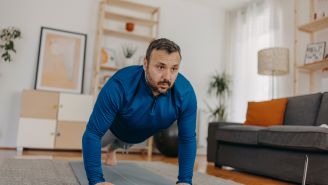Newton’s first law of motion is also sometimes called the law of inertia. Briefly, an object at rest stays at rest and an object in motion stays in motion … unless acted upon by an unbalanced force.
Consider that object you. Are you resting until some force pushes you out of your chair? If you wait for a heart crisis, you’ve waited too long. It also matters how long you sit before you get up, according to a multi-site study published in the Annals of Internal Medicine.
The researchers analyzed data for nearly 8,000 adults age 45 and up, each outfitted with a device on a hip to record movement. They concluded that the more hours a volunteer sat in a day–and the longer his sitting spells–the more likely he was to die over the four years studied. This proved true, the data revealed, even if the subjects exercised and weren’t overweight.
In short, just getting up could give you more time on this planet.
How to take breaks at your desk
The researchers from the Annals of Internal Medicine study recommended moving every thirty minutes; my advice is to move for five minutes during those breaks. There are many free or inexpensive apps that will remind you to take breaks or you could just set an alarm on your phone.
Here are a few other tips to get you up and moving:
- Keep small weights in or under your desk and do an arm routine during a break. Muscle-building is important for everyone. In fact, in seniors strength is linked to better cognitive function, according to a Finnish study published in June in European Geriatric Medicine.
- Consider exercise bands, which take up less room than weights, and are more versatile. You can use a band for both arm and leg exercises.
- Do squats or pushups, which can provide both a cardio and strength-building workout.
- You could use a peddler under your desk—you’ll keep blood flowing to your legs.
- For those times when you can’t take a break every half hour, at least stand and stretch every 15 minutes.
- If you have back problems and standing is better for you, you might try a stand-up or adjustable desk. You’ll also want to move, since standing can be hard on your back and legs.
Build movement into your life
Beyond sitting breaks, you need to add movement into an ordinary day. Here’s how to do it:
- At lunch, spend no more than 15 minutes eating. Use the rest of your break for a walk, a trip to the gym or squats and band-work in the office. If you run up a stairwell quickly, you can give yourself a real five or ten-minute workout.
- Walk or cycle to work. Too many commutes are wasted time sitting in a car. You might decide to walk to a train station rather than driving, or park your car further away from your office.
- What if you do construction or stand in a store or wait on tables? You may not have to worry about too much sitting time, but you probably aren’t getting cardio during work hours or building muscle in a well-rounded way, so you need to find time for targeted workouts.
Employers are becoming more sympathetic to the need for exercise. You might ask a supervisor or the Human Resources department how you can set up a class in your workplace. Maybe you can even recruit an instructor to come in and split the cost with your colleagues. Having exercise buddies is a good way to stay motivated.
Decrease your anxiety, depression and hostility
There’s significant research linking fitness to better mood. Most recently, a study in the Journal of Cardiovascular Nursing suggested that exercise can reduce anxiety, depression and hostility in heart patients.
But we all need to use our bodies throughout the day, and fingers tapping a keyboard or phone screen don’t count.
Regular movement will boost your energy, burn calories, improve your mood and help clear your mind. You’ll be more productive and you may even live longer, too.
This content originally appeared on Ornish Living.






